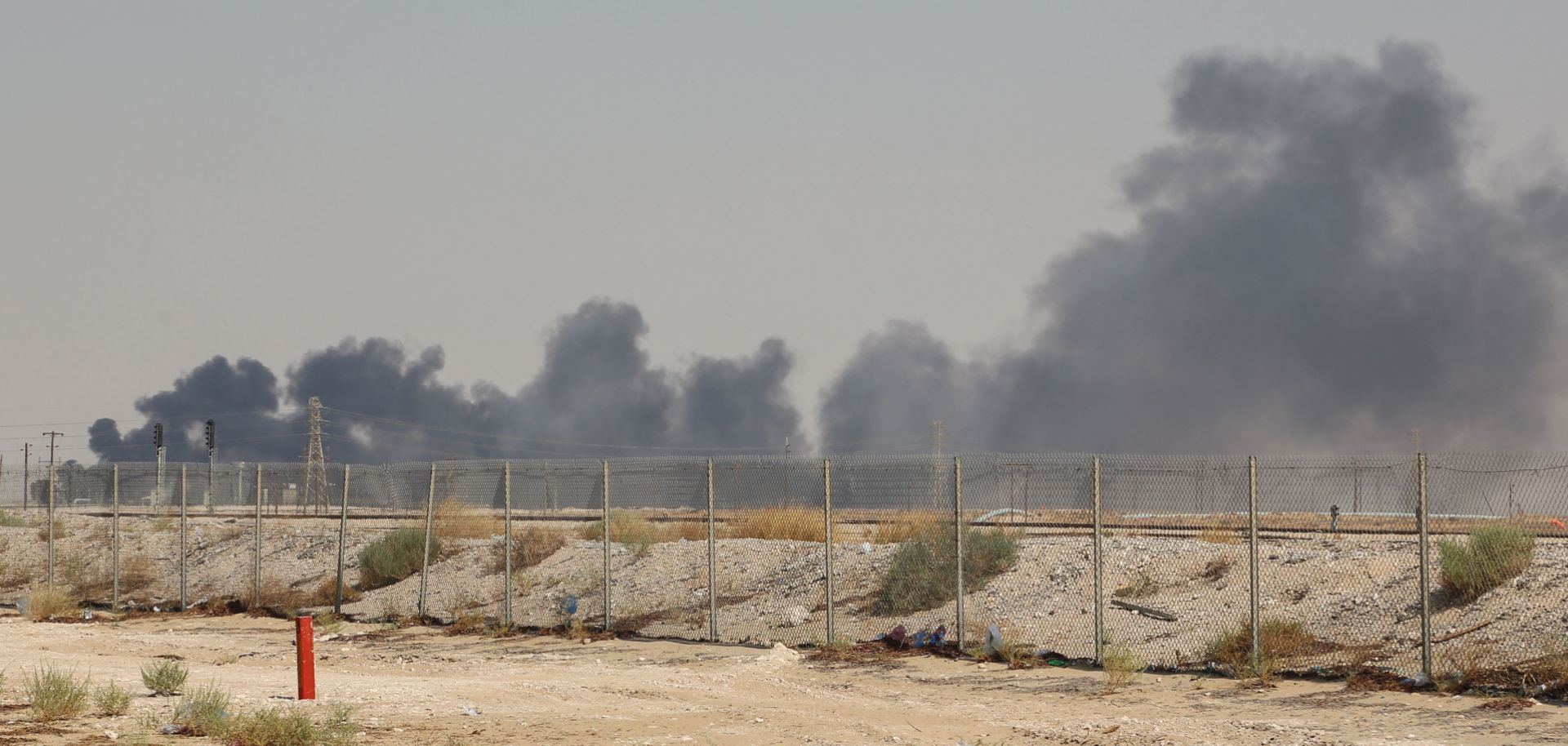In the early hours of Sept. 14, a barrage of cruise missile and drone strikes damaged the Abqaiq and Khurais crude processing and stabilization facilities belonging to Saudi Arabian Oil Co. (Saudi Aramco). The resulting destruction of the facilities' infrastructure initially cut Saudi Arabia's daily oil production in half, amounting to 5 percent of the global daily total, causing oil prices to spike.

The Abqaiq crude stabilization plant is the world's largest; it processed most of Saudi Arabia's onshore crude oil prior to the attack. In the immediate aftermath, there were fears the resulting damage would stifle the country's oil exports for months. But on Sept. 17, Riyadh said it had already restored 50 percent of its lost oil production and that rest would follow by the end of September.

But while Saudi Arabia appears to be on the path toward a quick recovery this time, the strike has laid bare the country's vulnerability to attacks on its energy infrastructure. Indeed, this incident marked the third attack against Saudi oil infrastructure in recent months, following a drone strike against two East-West pipeline pumping stations in May, as well as an attack that caused a fire at the Shaybah oil field's processing complex in August.
Read more about what the attacks could mean for Saudi Arabia and the global oil industry here.

Houthi rebels in Yemen initially claimed responsibility for the most recent incident, though U.S. officials have since stated they believe the strike originated in Iran. According to a Sept. 17 report, Washington is now mulling a range of options to retaliate against the alleged Iranian attack. However, the White House will still likely be wary of sparking an all-out military conflict with Tehran ahead of the 2020 U.S. presidential election.
Read more about the implications of Iran's likely involvement and the risk of U.S. retaliation here.

U.S. sanctions pressure and Washington's withdrawal from the Iranian nuclear deal has made Saudi Arabia and other U.S. allies in the region particularly vulnerable to such Iranian acts of aggression, especially as Tehran builds up its missile capabilities. In an analysis touching on this risk, Stratfor noted that "Iran's willingness and ability to directly hit Saudi Arabia and the rest of the world where it hurts the most — Saudi oil production — has forced Riyadh to recognize the threat of additional attacks."



